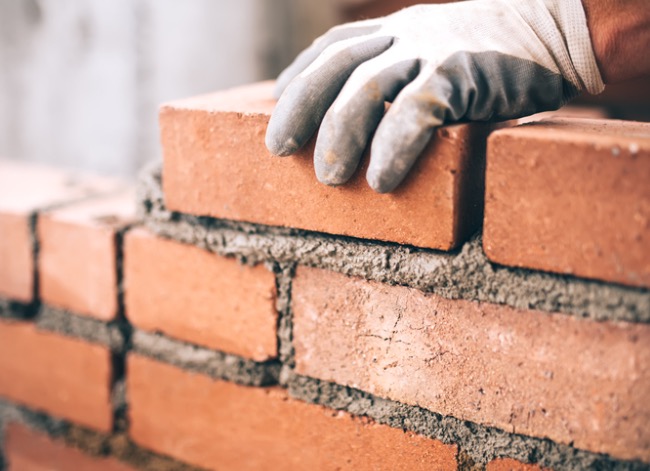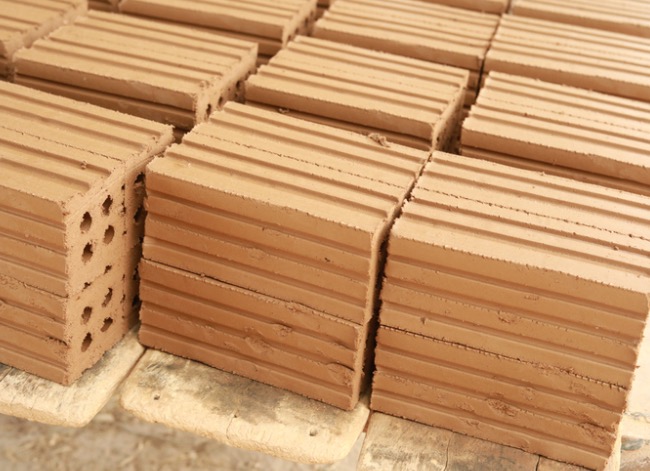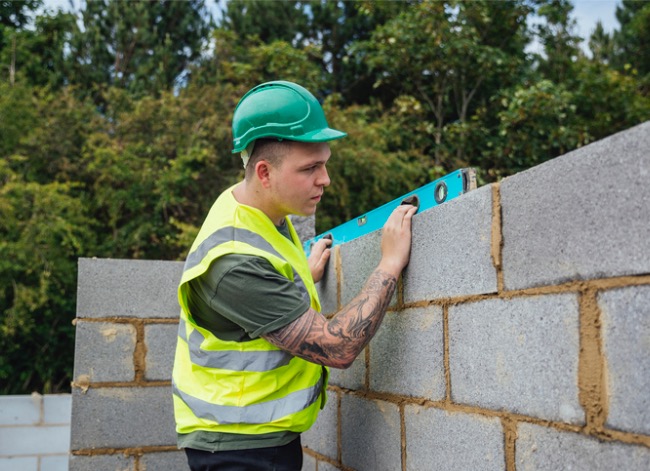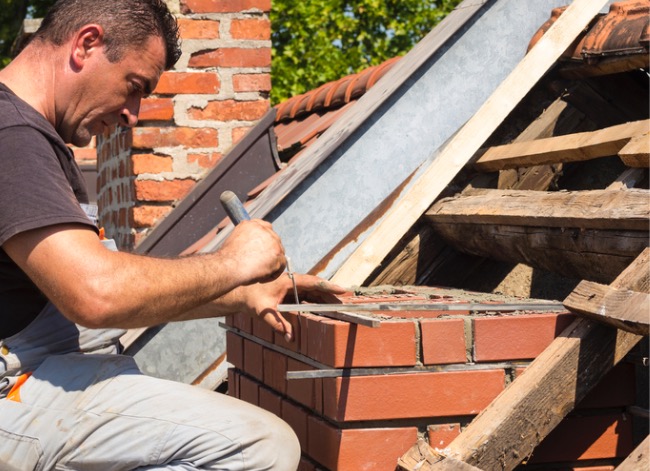

We may earn revenue from the products available on this page and participate in affiliate programs. Learn More ›
Bricks are used regularly in commercial, industrial, and residential construction because they are durable, long-lasting, and relatively fireproof materials that can resist heat. However, the type of brick can make all the difference, even for small masonry projects like building an outdoor grill station, making supports for a backyard bench, or even putting in a simple brick mailbox stand.
With seven different types of brick common to completing construction projects, it’s important to educate yourself about which type is best for your current or future projects and how to tell the difference between these seven types of brick.
1. Burnt Clay Bricks
Burnt clay bricks are also known as common bricks because they are the most abundant brick type in modern construction. These bricks are used in columns, walls, foundations, and more with a wide variety of purposes. When building walls, the burnt clay bricks require plastering or rendering with mortar to help improve the bricks’ strength, water resistance, and insulating ability.
These bricks are split into four different class categories based on quality. Fourth-class bricks are over-burnt, irregular in shape, and commonly broken down for use as an aggregate. Third-class bricks are poor-quality materials that should only be used for temporary structures. Second-class bricks are of moderate quality, though they have an irregular shape, rough surface, and might have hair-thin cracks. First-class bricks are the best of the burnt clay brick classifications. These high-quality bricks have a standard shape, smooth surface, and increased durability and strength.
Best For: Made for a variety of purposes, burnt clay bricks are the most versatile brick used in modern construction.
2. Sun-Dried Clay Bricks
Some DIYers might prefer to make these simple sun-dried clay bricks, which have been used as far back as 7,000 BC in southern Turkey and around the city of Jericho in modern-day Palestine. The bricks comprise a mixture of loamy soil, water, and straw; they also might include manure, clay, or sand to improve their strength and prevent the bricks from cracking.
The mixture needs to be poured into molds and the molds placed in a location out of the rain where they can dry. Once dry, remove the bricks from the mold and use them for temporary masonry projects. DIYers should keep in mind that these are the weakest and least durable of brick types, so they should never be used as load-bearing supports or foundations.
Best For: Sun-dried clay bricks aren’t as robust as other types, but they are an affordable and DIY option for temporary structures.
RELATED: How To: Repoint Brick Walls

3. Concrete Bricks
Typically used in internal brickwork or to make facades and fences, these bricks are made from solid concrete. The concrete is poured into custom molds, allowing manufacturers to create a variety of sizes and shapes. Many people may find these bricks at a local hardware store or masonry supplier.
Pros can make these concrete bricks at the worksite with a standard mix of one part cement, two parts sand, and four parts aggregates. Choose an increased strength of concrete bricks if they will be used for foundations with an adjusted formula of one part cement, three parts sand, and six parts aggregates.
Best For: Commonly used for facades, internal brickworks, and outdoor walls, concrete bricks can be manufactured on construction sites by professional masons, saving shipping time and costs for large construction projects.
4. Engineering Bricks
As the name suggests, engineering bricks are a favorite of structural engineers because of their high compressive strength and density, ideal qualities for use as load-bearing materials. Engineering bricks also have a low absorption capacity, meaning that they cannot absorb a significant amount of moisture, which helps to ensure that the bricks don’t crack, crumble, or leak.
The low porosity has the added benefit of making these bricks more resistant to chemicals that might otherwise seep into masonry materials, corroding them from the inside. Due to their impressive strength, density, chemical resistance, and water resistance, these bricks are used regularly to make basement foundations, sewers, manholes, and retaining walls.
Best For: With their high compressive strength, low porosity, and resistance to chemical and water damage, engineering bricks are ideal for use in basements.
RELATED: Solved! The Purpose of Weep Holes in Brick

5. Sand Lime Bricks
Made using a mixture of sand, lime, and possibly a color pigment to alter the final appearance of the brick, sand lime bricks have a high compressive strength, so they are a common option for load-bearing walls in houses and multi-storied buildings. This type of brick doesn’t require a high amount of mortar plaster, which saves time and reduces costs on a project.
Sand lime bricks are manufactured using both heat and pressure to accelerate the chemical reaction, resulting in bricks that have a smooth, uniform finish that’s ideal for construction projects. These bricks are also common as acoustic insulation because sound has a hard time passing through the dense sand lime material.
Best For: Sand lime bricks are a great option for acoustic insulation; a high level of strength and fire resistance makes them a popular choice to use in load-bearing walls.
6. Fly Ash Bricks
Fly ash is a byproduct produced by coal-fired power plants that can contain toxic metals like mercury, arsenic, antinomy, and chromium. Made using class C or class F fly ash, quicklime, cement, aluminum powder, gypsum, and water, fly ash bricks help to reuse and reduce the amount of toxic metals released into the environment. They also have a more uniform shape than some bricks because of their casting in a machine mold.
These bricks have high compressive strength and low water absorption rate, so they are an excellent alternative to burnt clay bricks. However, the durability of fly ash bricks decreases as the size of the brick increases, leading to cracks and fractures in fly ash slabs. For this reason, fly ash bricks typically come only in small sizes.
Best For: Fly ash bricks are strong, durable construction materials that can be used in place of burnt clay bricks, and they are made by reusing toxic metal byproducts from coal-fired power plants, helping to protect the environment by reducing toxic waste.
RELATED: 5 Things to Know Before Installing a Brick Backsplash
7. Firebricks
If the goal of the masonry project is to create a structure, wall, or framework that is highly resistant to heat and fire, then firebricks are the best material. These bricks are also known as refractory bricks and are made with a special type of clay known as fireclay, which mostly contains silica and alumina. As a result, firebricks can withstand temperatures greater than 3,000 degrees.
Firebricks don’t just resist flames; they can also hold up to low temperatures and rapid changes between hot and cold temperatures. As expected, these bricks typically go into making furnaces, chimneys, fireplaces, brick grills, fire pits, wood-fired ovens, and other high-heat applications.
Best For: Commonly used to line chimneys, build brick grills, or make fire pits, firebricks have an extremely high resistance to heat and fire, ensuring that they won’t crack, chip, or break from heat stress.

